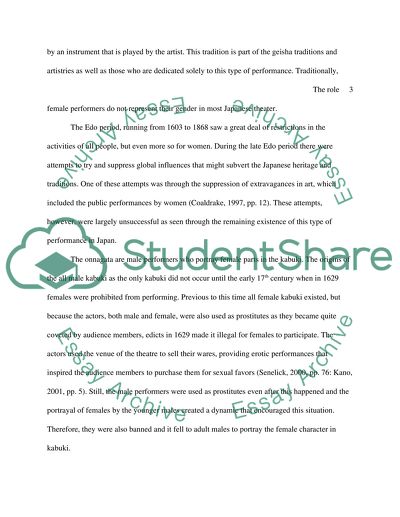Cite this document
(“The role of women in Japanese Theatre and the portrayal of Japanese Essay”, n.d.)
The role of women in Japanese Theatre and the portrayal of Japanese Essay. Retrieved from https://studentshare.org/miscellaneous/1566331-the-role-of-women-in-japanese-theatre-and-the-portrayal-of-japanese-women-in-western-theatre
The role of women in Japanese Theatre and the portrayal of Japanese Essay. Retrieved from https://studentshare.org/miscellaneous/1566331-the-role-of-women-in-japanese-theatre-and-the-portrayal-of-japanese-women-in-western-theatre
(The Role of Women in Japanese Theatre and the Portrayal of Japanese Essay)
The Role of Women in Japanese Theatre and the Portrayal of Japanese Essay. https://studentshare.org/miscellaneous/1566331-the-role-of-women-in-japanese-theatre-and-the-portrayal-of-japanese-women-in-western-theatre.
The Role of Women in Japanese Theatre and the Portrayal of Japanese Essay. https://studentshare.org/miscellaneous/1566331-the-role-of-women-in-japanese-theatre-and-the-portrayal-of-japanese-women-in-western-theatre.
“The Role of Women in Japanese Theatre and the Portrayal of Japanese Essay”, n.d. https://studentshare.org/miscellaneous/1566331-the-role-of-women-in-japanese-theatre-and-the-portrayal-of-japanese-women-in-western-theatre.


